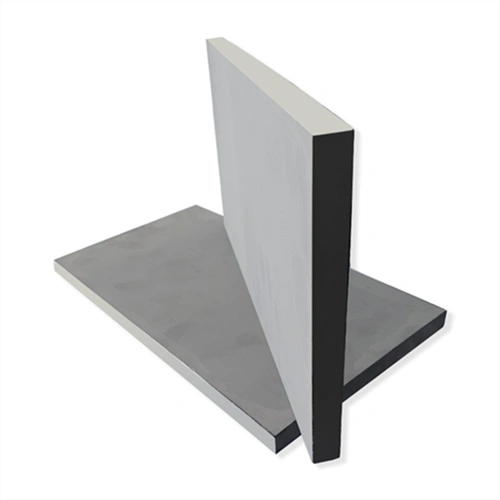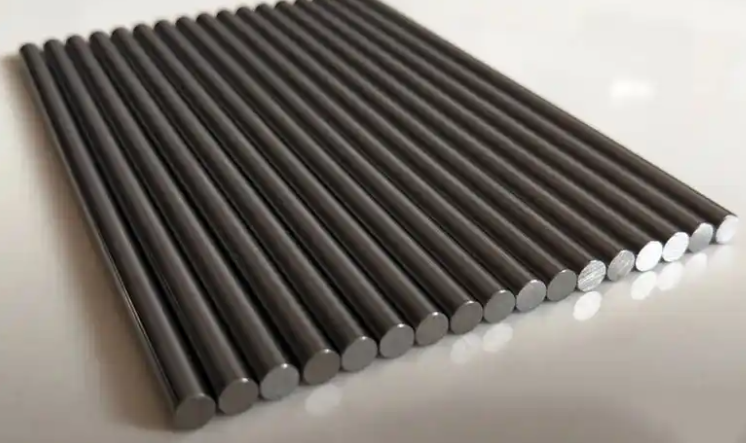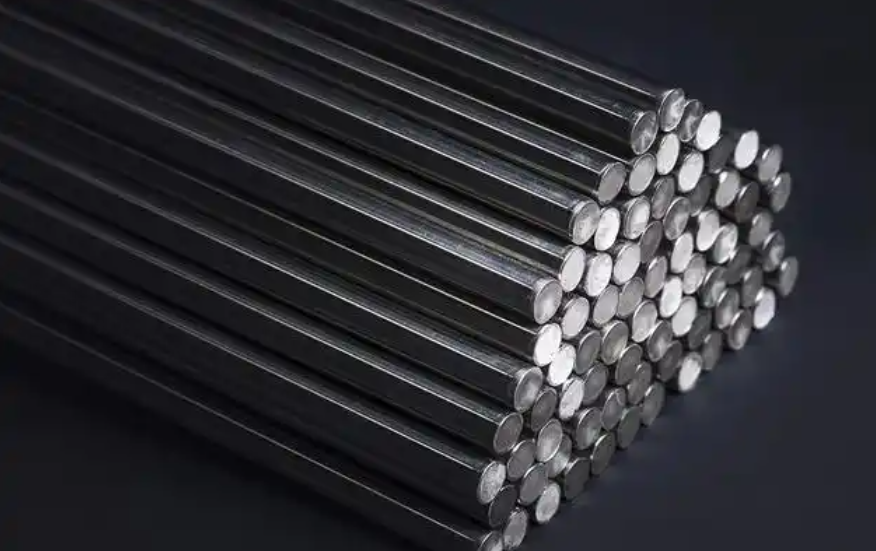
Sample Preparation and Experimental Conditions
Material Selection
To compare the corrosion resistance of WC-based cemented carbides, four groups of test materials were selected:
(1) WC-Co alloy;
(2) WC-Co alloy with a small amount of heterogeneous carbides;
(3) WC-Ni·Mo·Co·Cr alloy;
(4) Low binder phase content alloy.
Corrosion Conditions
Corrosion Media: Hydrochloric acid, sulfuric acid, nitric acid, citric acid (H?Cit), acetic acid (HAC), sodium hydroxide (50%), and potassium hydroxide (50%).
Test Temperatures: 20°C, 40°C, 80°C, and boiling point. Alkali solutions were only tested at the boiling point.
Corrosion Time: 24-72 hours for low temperatures and 6-24 hours for the boiling point.
Corrosion Rate Calculation: The corrosion rate (A) is calculated as the amount of material corroded per unit area per day, expressed in mg/dm2·day (abbreviated as mdd).
Results and Discussion
Relationship Between Corrosion Rate and Binder Phase Content in WC-Based Cemented Carbides
The corrosion rate of WC-based cemented carbides is related to the content of the binder phase, regardless of the binder’s composition. Alloys with higher binder content exhibit higher corrosion rates. For WC-Co alloys, when the cobalt content exceeds 2%, the corrosion rate increases sharply. In 5% HNO?, the corrosion rate of WC-2% Co alloy still exceeds the acceptable limit. However, the corrosion rate of WC-Ni·Mo·Co·Cr alloy with 2% Ni·Mo·Co·Cr meets the usage requirements under all tested conditions. Even in highly corrosive nitric acid, its corrosion rate is only 196.6 mdd, corresponding to corrosion resistance grade B (less than 250 mdd).
The difference in corrosion rates among alloys with varying cobalt content is not significant at room temperature. However, as the temperature increases, the difference becomes more pronounced. At room temperature, increasing the cobalt content from 2% to 20% results in a corrosion rate change of only 12-30 mdd. At the boiling point, the corrosion rate increases from 20 mdd for low cobalt content to 6×10? mdd for high cobalt content.
Effect of WC Grain Size on Corrosion Rate
Fine-grained alloys have higher interfacial energy and greater internal stress in the binder phase, resulting in lower corrosion resistance. Therefore, fine-grained alloys are not recommended for improving resistance.
Effect of Small Amounts of Heterogeneous Carbides on Corrosion Rate
Comparing WC-Co cemented carbides with small amounts of heterogeneous carbides reveals that their effects on corrosion rates vary:
Cr?C?: A small amount of Cr?C? can improve the alloy’s corrosion resistance. Even though alloy No. 9 has finer WC grains than alloy No. 4, its corrosion resistance is superior due to the addition of Cr?C?.
TaC: The addition of a small amount of TaC has no significant effect on resistance. Comparing alloy No. 4 with alloy No. 7 (which contains 2% TaC), the corrosion rates are similar. Adding 5% TaC also does not improve corrosion resistance.
Mo?C: Adding less than 1% Mo?C can significantly enhance resistance. This is because Mo?C readily dissolves in the γ phase, thereby improving the alloy’s corrosion resistance.
Thus, adding small amounts of Cr?C? or Mo?C is beneficial for improving the corrosion resistance of cemented carbides.
Effect of Graphite and η1 Phase on Alloy Corrosion Rate
The presence of graphite and η1 phase not only significantly affects the physical and mechanical properties of the alloy but also has a notable impact on the corrosion rate. For the tested media, the presence of graphite significantly reduces the alloy’s corrosion resistance. When graphite is present, the solubility of tungsten (or molybdenum) in the binder phase drops below 2-3%, reducing the binder phase’s resistance. Additionally, according to corrosion theory, graphite increases the electrochemical corrosion effect of micro-galvanic cells between phases. Therefore, cemented carbides used as corrosion-resistant materials must avoid the formation of graphite.
In contrast, the η1 phase significantly enhances the alloy’s corrosion resistance. The presence of η1 phase indicates carbon deficiency in the alloy, allowing the binder phase to dissolve a large amount of W (or Mo), typically 10-13%. This composition of the binder phase is more corrosion-resistant. Moreover, the transformation of a certain amount of binder into η1 phase further improves the alloy’s resistance. Thus, under carbon-deficient conditions, the alloy’s corrosion resistance increases sharply compared to normal alloys.
Given these findings, the carbon content should be controlled at the lower limit of the two-phase region or allow the formation of a small amount of dispersed η1 phase, provided that the mechanical properties are not excessively compromised. This results in an ideal microstructure with high corrosion resistance.
Relationship Between Binder Phase Corrosion Resistance and Alloy Corrosion Rate
While the mechanical properties of WC-Ni alloys are generally lower than those of WC-Co alloys, their corrosion resistance is superior, especially under low-carbon conditions. However, alloys with pure nickel as the binder often fail to meet usage requirements, leading to the development of complex nickel-based binders. Ni-Mo alloys exhibit excellent resistance to acid and alkali corrosion, making them suitable as binders for WC-based alloys. This study tested the corrosion resistance of alloys with Ni-Mo-Co-Cr (83:15:1:1) as the binder. The overall trend in corrosion rates for this series is similar to that of WC-Co alloys, but the values are significantly lower. Particularly, low binder content alloys meet the specified usage requirements for all tested media, with corrosion rates below 250 mdd. Additionally, the corrosion rate of WC-Ni·Mo·Co·Cr alloys does not change significantly with increasing temperature.
In summary, improving the corrosion resistance of WC-based cemented carbides depends on enhancing the binder phase’s corrosion resistance, which is particularly effective for low binder content alloys.
Activated Sintering of WC-Based Low Binder Content Alloys
An important approach to improving the resistance of WC-based cemented carbides is to reduce the binder content, provided that the physical and mechanical properties meet usage requirements.
To enhance the performance of sintered products, activated sintering is often employed. The properties of low binder content alloys are closely related to the uniformity of component mixing. Therefore, chemical mixing to produce composite powders, intensified ball milling, and activated sintering processes were adopted. For comparison, conventional processes were also used to prepare alloys with the same composition.
Comparison of Corrosion Resistance Among Different Alloys
Corrosion rates are classified into three grades: A (<25 mdd), B (<250 mdd), and C (<500 mdd). For WC-Co alloys, only low binder content alloys exhibit comprehensive corrosion resistance. In contrast, WC-Ni·Mo·Co·Cr alloys maintain considerable corrosion resistance even with 10% binder content. Notably, WC-2% Ni·Mo·Co·Cr alloys demonstrate excellent resistance under all tested conditions.
WC-Ni·Mo·Co·Cr alloys are widely used in manufacturing ballpoint pen tips. These alloys outperform traditional WC-Co·Ni·Cr alloys in various properties, are easier to produce, and have lower production costs, making them ideal materials for corrosion-resistant ballpoint pen tips.

Conclusions
1.The corrosion resistance of WC-based cemented carbides is primarily determined by the resistance of the binder phase. Lower binder content results in better condition. Alloys with Ni·Mo·Co·Cr as the binder exhibit significantly lower corrosion rates than WC-Co alloys, especially those with low binder content.
2.The corrosion rate of WC-based cemented carbides is related to the grain size of the hard phase. Finer grains lead to poorer corrosion resistance.
3.Small amounts of heterogeneous carbides, such as Cr?C? and Mo?C, can improve the resistance of WC-Co alloys, while TaC has little to no effect.
4.Graphite reduces the resistance of WC-based alloys, whereas the η1 phase significantly enhances it. Therefore, the ideal corrosion-resistant alloy should have carbon content controlled at the lower limit of the two-phase region or allow the formation of dispersed η1 phase without excessively compromising mechanical properties.
5.Low binder content alloys with good corrosion resistance can be prepared using chemical mixing to produce composite powders, intensified ball milling, and activated sintering processes, achieving high physical and mechanical properties.
6.The study of the corrosion resistance of WC-based cemented carbides provides a basis for their broader application.










